Brian Meert's Blog, page 54
October 21, 2021
Advertising on Amazon with Sponsored Ads: Product, Brand, & Display

If you’re hoping for an easy way to market your store and increase product sales, Amazon ads are one of your best bets. But who can make ads on Amazon, what are the different types, and which type of Amazon ad is best for you?
This guide will answer all of these questions and more so you can start advertising on Amazon and get more customers clicking ‘Add to Cart’.
Why should I advertise on Amazon?The benefits of advertising on Amazon are threefold:
It’s easy. Unlike Facebook or Google, making an effective Amazon ad is straightforward. For example, a lot of attention to detail on ad copy and images is needed to make a Facebook campaign successful. In comparison, Amazon sellers have found that they can create ads with their existing product photos and listings content and still see a great ROI.It’s direct. Facebook and Google ad targeting options, though precise, are educated guesses based on peoples’ interests. Amazon’s audiences have their credit cards ready to go, and Amazon knows exactly what they like to buy. Don’t underestimate the power of the consumer data Amazon can provide advertisers: You can even add the ASINs of your competitors as a targeting option, allowing you to broadcast your better deal to shoppers who bought or showed interest in their product. Your ad can even be displayed as they’re about to buy the competitor’s product – that’s some direct advertising!It’s profitable. A lot of factors go into the outcome of an ad campaign, but Amazon on average delivers the most bang for your buck. The cost-per-click (CPC) of Amazon ads are usually lower, they require less time to set up, and they have higher conversion rates. All of this results in more sales, revenue, and a better ROI compared to advertising on other platforms. Who can advertise on Amazon?For Sponsored Product, Sponsored Brand, and Display advertisements:
Those who have a seller accountThose who have a vendor accountNote: You may have read of a loophole for stores off Amazon called Vendor Express. This is no longer true because the Vendor Express Program shut down in May of 2018.Unfortunately, this means businesses with no presence on Amazon cannot utilize its ad services. However, many that have their own website or primarily sell off Amazon still find having a seller account beneficial for business, so becoming a seller on Amazon is worth considering.
There is also the Amazon DSP (Demand-Side Platform), which is accessible to companies both on and off Amazon. These are video, audio, and display ads that can either be placed on Amazon or on affiliate platforms like Kindle or Twitch. Amazon DSP ads can be accessed in two ways:
Self-service: Companies who create, launch, and manage their own Amazon DSP ads.
Managed: Companies who use a professional Amazon advertising agency to manage their ad campaigns. Managed ad campaigns on the DSP require a minimum ad spend of $35,000.
Though self-service DSP ads on Amazon don’t have a minimum budget, they are usually not meant for Amazon sellers or small businesses. Setting up DSP ad campaigns requires programmatic advertising experience as they are more technical and complicated (take a look at all of the Amazon DSP ad targeting options, for example) and typically require 5-digit ad budgets.
In this article, we are focusing on the 3 main ad formats for Amazon:
Sponsored Product AdsSponsored Brands Ads (previously called Headline Search Ads)Sponsored Display Ads (previously called Product Display Ads)There’s far more to know about these Amazon ad types besides the simple definitions above, though — each has different purposes, placements, costs, pros and cons, and so on. We’ll go through everything to know about each ad format, and use this information to discover which ad type is best for your next campaign.
Sponsored Products AdsWhat are Sponsored Products Ads?Sponsored Products Ads feature a single product from your Amazon store. Once a user clicks on your ad, they will be directed to your featured product’s details page. They are PPC (price per click) ads, meaning you are charged only when someone clicks on your ad. Targeting options are based on keywords and ASINs, which you can enter manually or have the platform’s advanced algorithms determine automatically.
Sponsored Products Ads lets your product get ahead of the competition and receive more exposure from shoppers, especially if your product is new, lacks reviews, or is in a saturated category. Strategically, they’re also a great method of gathering data if you don’t have much to start with.
For example, if you need to do some keyword harvesting, you can create a Sponsored Products Ad campaign and select the automatic targeting option. Amazon’s algorithms will outline the keywords it determined as most relevant for your product, which you can then use for your product listing and for future ad campaigns.
Where are Sponsored Products Ads placed?Your ad can appear above or below search results pages or on product detail pages of competitors according to the keywords you use for the campaign.
How much do they cost?Technically, your ad spend can be just $1 per day. The “ideal” budget depends on your category, product, keywords, and your advertising goals. Your bidding price determines how quickly your budget is spent and the likelihood you’ll outbid competitors for ad placements, so your budget should consider your bid costs and how long you want the campaign to run.
When Should You Use Sponsored Products Ads on Amazon?If your product needs more exposure. Maybe your product listing on Amazon is new, is in a competitive category, or it’s ranking low on search results and you don’t know why. Not only will a Sponsored Products Ad boost your listing ahead of the competition while it’s running, but you can use the data reports Amazon provides to improve your listing’s organic search rankings as well.
If you’ve never made an Amazon ad before. A Sponsored Products Ad using automated targeting and nothing more than the photos/copy of your product listing can have a great ROI, even if your campaign budget is small. This makes it the perfect ad to start with if you’re trying to advertise on Amazon for the first time.
If you want to do keyword research. Use this ad format to try out keywords manually or for keywords harvesting. Though Sponsored Brands Ads also are keyword-targeted, Sponsored Products Ads are especially useful because they focus on a specific product.
If you’re a Kindle Direct Publisher or bookseller. This should be your go-to Amazon ad format if you’re an author or publisher. Sponsored Products Ads will sell your product for you effortlessly – you don’t even need to bother with ad copy for your ad to increase sales and revenue.
Sponsored Brands AdsWhat are Sponsored Brands Ads?Similar to Sponsored Products Ads, these are PPC ads that use keywords and ASINs to target audiences. The main difference is that Sponsored Brands Ads feature your store and up to 3 products to highlight instead of a single product.
Strategically, this Amazon ad type can help achieve different objectives than Sponsored Products Ads, which are mostly meant to increase sales. For example, they can help meet KPIs if your main marketing goal is to increase brand awareness. Sponsored Brands Ads also have a larger variety of ad formats to accommodate the larger quantity of photos and creatives needed for them, such as the carousel format or Amazon Store Spotlight.
Sponsored Brands Ads also carry greater risk and reward. The best-performing Sponsored Brands Ads have higher click-through rates than the best-performing Sponsored Products Ads but have a lower click-through rate on average. In other words, the best Sponsored Brands Ads perform better, but this ad type is not as forgiving towards average-quality campaigns.
Where are Sponsored Brands ads placed?Sponsored Brands Ads also appear on search results pages and product details pages. The key difference in their placement compared to Sponsored Products ads is that they can appear within search results for mobile users. Their larger format makes them look remarkably different from Sponsored Products Ads from the perspective of the viewer, especially when at the top of the search results page.
How much do they cost?The minimum cost for Sponsored Brands Ads is also $1 per day (technically, as this is the minimum ad spend required). Just like with Sponsored Brands Ads, the ideal budget varies from seller to seller, so you should consider your bidding price, how long your ad will run, your advertising goals, etc.
When should you use Amazon Sponsored Brands Ads?If you’re a new Amazon seller. Sponsored Brands Ads are a great way to put your store in the spotlight to relevant customers without having to wait. This is especially true for brands that are not new themselves but are new to Amazon – the added conveniences for Amazon shoppers like prime delivery could be the final push for previously interested shoppers to make a purchase, so it’s important to make them aware of this new option.
If you have several new products or a family of products. For example, a skincare brand would benefit from using a Sponsored Brands Ad because shoppers tend to buy multiple products to cover their skincare routine.
If your main objective is to increase brand awareness. Sponsored Brands Ads will increase your sales, but they’re much more effective at increasing brand awareness compared to Sponsored Products Ads.
Sponsored Display AdsWhat are Amazon Sponsored Display Ads?Previously known as Product Display Ads, Sponsored Display is a remarkably different type of Amazon ad compared to our previous two. Its appearance doesn’t look incredibly different, but its purpose and targeting method are completely different from Sponsored Products and Brands Ads.
Sponsored Display Ads are Amazon’s retargeting solution for sellers. They’re meant to be shown to people who’ve purchased similar products like yours, have shown interest in products similar to yours, and people who have purchased your products.
If you’re itching to make the most of Amazon’s incredible consumer data to boost your sales, this is the type of ad for you. Unlike Sponsored Brands or Sponsored Products Ads, Sponsored Display Ads use interest-based targeting and demographics data to find the right audiences for you. There are 3 options available:
Views Remarketing will target audiences who have viewed your products but did not make a purchase within the last 30 days, or who have viewed product pages that meet your criteria.
Search Remarketing is the only option that technically involves keywords because it targets audiences who searched for terms related to your products.
Purchase Remarketing allows you to target previous customers.
These 3 options provide many more strategy possibilities depending on what you advertise. For example, you could make a Sponsored Display Ad using purchase remarketing if your product is nondurable, like lotion or vitamins, or you could advertise a different product the buyer purchased using the same options.
Where are Amazon Sponsored Display Ads placed?Sponsored Display ads can show up on customer reviews pages, in the sidebar at the top of offer listings, on product details pages, and even on other sites. You read that correctly – if Amazon’s algorithms determine they’ve found your audience on one of Amazon’s affiliate platforms (Kindle, Twitch, etc.) your Sponsored Display Ad could appear, typically in a banner format.
How much do they cost?There is no minimum budget required for Sponsored Display Ads. They’re PPC ads like Sponsored Product and Sponsored Brands Ads, so you should budget your ads according to your bidding price, how long you want the campaign to run, your advertising budget, and so on. However, Sponsored Display Ads will give you an estimate of how many people your ad will reach as you’re setting up your campaign, which you can help use to determine what your optimal budget should be.
When should you use Sponsored Display Ads?If your product is consumable. For products that require repurchasing, like body wash or candles.
If you want to target competitors. Sponsored Display Ads allow you to place your product right on the page of your direct competitors. This is especially useful if your product is a better deal.
If your goal is reach and exposure. By targeting based on user activity, Sponsored Display Ads are great for brand awareness and to boost new product listings. You can find new audiences you may have been missing via keyword targeting, or a nice audiences that are interested in your product.
October 14, 2021
5 Easy Ways to Boost Your Holiday Ads on Facebook
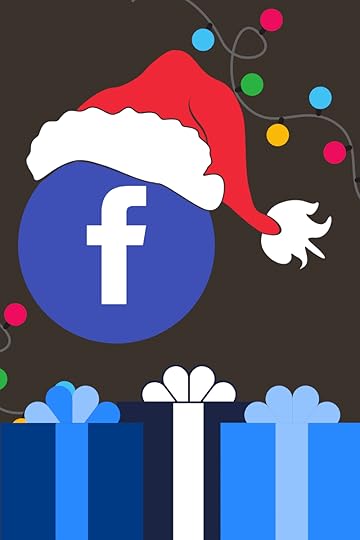
Facebook hasn’t enjoyed a positive light in the press lately. But make no mistake, advertising on Facebook and Instagram is still one of the best methods to attract customers and maximize sales. This is especially true for the holiday season; a well-done ad campaign on Facebook or Instagram can make Q4 the best quarter of the year.
Making amazing holiday ad campaigns on Facebook is easier said than done, however. It’s a competitive time for digital advertising. Many businesses launch their best and biggest marketing campaigns in Q4 to catch the attention of holiday gift shoppers.
That’s why any experienced Facebook advertising agency will advise most businesses to start preparing well before October, but don’t lose hope if you’re lagging behind — Here are 5 things you can do right now that’ll boost your holiday ads in time for you to increase your sales and revenue for Q4.
1. Optimize the Customer JourneyYou can have the best creatives and smartest strategy in the game, but you won’t get conversions and sales the customer experience after clicking your ad is subpar. Before you launch your Facebook holiday advertising campaigns, make sure the journey from viewing your ad to purchasing products is smooth and seamless.
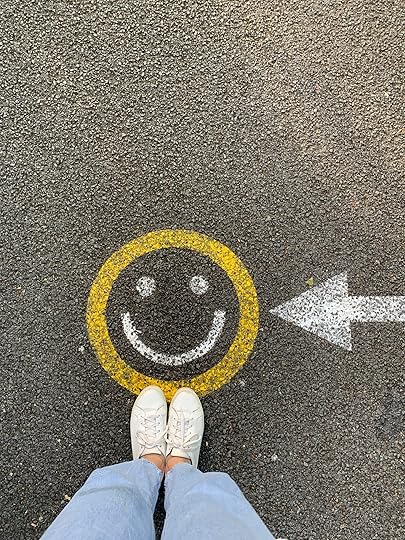
Source / Jacqueline Munguia on Unsplash
How can I prepare my online store for the holidays?Make the purchase process as easy as possible. You will lose sales if it takes too much time or is too complicated for someone to make a purchase after clicking on your ad. Optimize your site for mobile traffic and make sure your pages load quickly. If you don’t have your own site, set up a Facebook Catalog account to manage your sales directly on the platform. Facebook Catalogs can be set up to run and advertise on both Facebook and Instagram, so even brands with a website can take advantage of its seamless shopping experience for customers. Check recent reviews and customer feedback. Make sure you know exactly what your happiest customers are raving most about so you can highlight them throughout your marketing. Take a careful look at your critical reviews as well, especially if they’re regarding shipping, technical issues, or customer service. These common issues can turn into huge bottlenecks come November with more traffic, so try to address them as best as you can before then.Pre-Holiday Tip for Facebook Advertising: Facebook PixelIf you have your own site and don’t have Facebook Pixel yet, you need to start using it! Facebook Pixel is a snippet of code that you can add to track your audience’s activity on your site. It collects detailed consumer data on different “Pixel Events,” like customers adding items to their cart, customers who completed a purchase, etc. It’s the most powerful targeting/retargeting data you can possibly get for your Facebook advertising.
2. Use the Reach & Retarget StrategyIf you’re working with a small budget or you need to make a holiday marketing campaign fast, the reach and retarget strategy can help. It starts with increasing your brand awareness to expand your audience of potential customers. Shortly after, you create ads reaching back out to individuals who are most likely to make a purchase. Despite being shockingly simple, this strategy is a foolproof method to get more clicks and increase revenue.
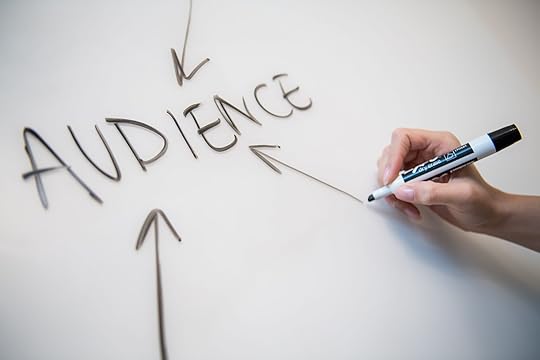
Source / Melanie Dezeil on Unsplash
What does it mean to reach and retarget audiences?Reach: Create ad campaigns with the main objective of reaching new customers and increasing brand awareness. These customers have little to no knowledge of your brand, so brand awareness campaigns are your chance to make an unforgettable first impression. Running ads to increase your brand awareness on Facebook a few weeks or months before the holidays will provide you with a larger audience to retarget and more data to enhance your Facebook ad targeting for next year.
Retarget: Create ad campaigns for viewers who already purchased products, clicked on an ad but didn’t purchase anything, or reacted to your previous ads. These audiences have already shown interest in your products, so campaigns to retarget them should focus on eliminating the factors that kept them from buying. If you run a brand awareness ad you ran beforehand, your retargeting audience will be larger, which means more potential conversions.
Facebook retargeting campaigns are perfect for promoting seasonal discounts and holiday deals — just make sure you organize these audiences with care so customers don’t see deals for products they already purchased earlier in the year.
3. Diversify Your Creatives and ContentIt’s the worst time of year to only have limited creatives for your Facebook ads. Don’t settle for just a few festive images — gifs, videos, and other types of creative content should be in your repertoire. No matter what formats you use, make sure they’re high-quality and have eye-catching qualities, like appealing color combinations and festive themes. Your ads will be competing for attention in a crowd of other advertisers who brought their best marketing campaigns to the table, so you’ll need more than standard product photos to stand out.

Source / Joshua Earle on Unsplash
If you’re running out of time to make new creatives, make use of user-generated content. For example, you can encourage loyal customers to submit videos reviewing and presenting your products or your business in general. So long as these videos are trimmed and edited to fit ad guidelines, ads with user-made content perform wonderfully both on Instagram and Facebook. You can also collect and quote reviews from satisfied customers to display in Facebook Carousel ads in between product images.
4. Make Smart Holiday DealsWhen most people hear the term “holiday deals,” they think of discounts. Though there are some cases where discounts provide a compelling offer (e.g. the retargeting campaigns mentioned earlier), they shouldn’t be the first option on your mind when brainstorming your holiday promotional campaigns.
What seasonal offers can you make for products besides discounts?Before you launch your Facebook ad campaign, consider some of these smart seasonal deal strategies:
Free gifts: Find a cheap complimentary item to provide as a gift when customers purchase a product you’re prioritizing for holiday sales. Customers find these extras compelling even if they wouldn’t go out of their way to buy them, like an extra pair of colored shoelaces with new shoes, or a mug with a coffee machine. This is especially useful if you have items in your inventory that didn’t sell well this year.Free shipping: Delivery prices are a huge factor that customers consider when making a purchase. Some will even buy a more expensive item if free shipping is offered, so don’t be afraid to up your prices by a bit to cover free shipping and highlight this convenience in your ads/offers.Expedited Shipping: We all know at least one person that waits last minute to buy Christmas presents, and many people are willing to pay for shipping if it means their gifts arrive quickly. You can tap into this crowd and increase sales by offering expedited shipping at no extra cost. FOMO: No matter what type of holiday deal you decide on, you should utilize the Fear of Missing Out (FOMO) in ads on Facebook and beyond. Compel customers to act by creating a sense of urgency by using words like “hurry, time, soon,” or “running out” within your ad campaigns. Source /
Artem Beliakin
on Unsplash5. Test Your Holiday Ads Before You Invest
Source /
Artem Beliakin
on Unsplash5. Test Your Holiday Ads Before You InvestWhile there’s still some time left, you should A/B test your Facebook ad campaigns. One of the biggest advantages of Facebook advertising is that the platform provides you with comprehensive and extensive amounts of data on your ad performance. A/B testing allows you to take full advantage of this by comparing and contrasting the results of your different ideas and options and choosing whichever meets your goals in the most effective way.
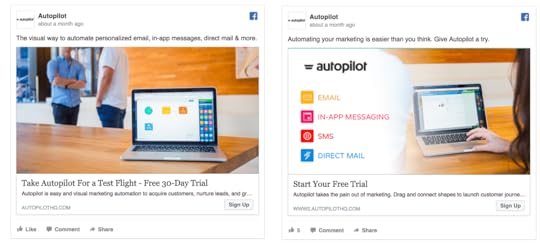
Source / Anees Ahmad on Quora
When A/B testing your campaigns, don’t forget to experiment with Ad Manager options in addition to more obvious campaign elements like your copy and creatives. Split-testing your ad placements, target audiences, bidding methods, and campaign objectives can boost your campaign significantly.
For example, you can test out different ad placements. You might discover that more competitive placements are not converting as well as you anticipated or that your ads actually perform well in less popular (and less expensive) spots. This knowledge will save you a lot of money and headache when you launch your ads with higher budgets later on.
Wrapping Up the Facebook Holiday GuideAds on Facebook during the holidays can be competitive, and the marketing campaigns require extra effort to stand out. With these 5 strategic tips, any business can ensure their Facebook ads will attract the sales and revenue increase that Q4 is known for, even if they don’t have the massive budgets and marketing teams that larger companies do.
If you want more holiday marketing tips and insights for Facebook, check out their guide for businesses. You can also discover how to make your ads reach the right audiences all year round with our Facebook Audience Targeting Options Infographic. Better yet, if you’re ready to get serious about your digital advertising, reach out to the AdvertiseMint team; we’d love to answer any questions you may have and help you create your next big campaign!
October 7, 2021
TikTok Advertising: Is it Right for Your Business? 3 Pillars of Success


Source / Solen Feyissa on Unplash
TikTok has insane potential for businesses, but most of them don’t even know it. Here are 3 things you should do to find out if TikTok advertising is right for your brand.
TikTok is quickly taking over as one of the most important social media platforms. With one of the most ad-friendly audiences and the potential to reach millions of new customers, the video-sharing app has also proven itself as a lucrative digital advertising tool. In fact, some brands have become internet-famous using a marketing strategy focused solely on TikTok and its massive user base.
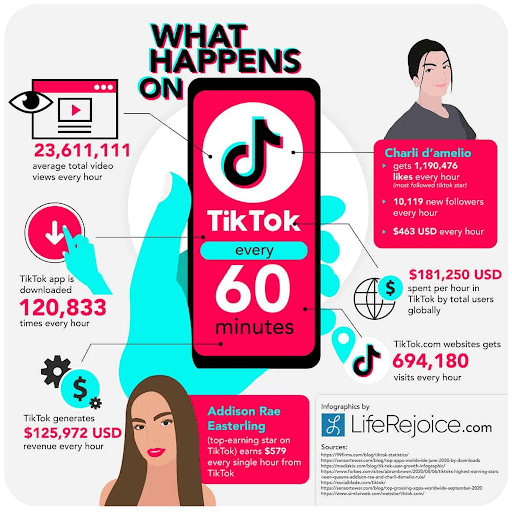
Source / DailyInfographic.com
Despite all of this potential, even the most seasoned digital marketing experts don’t consider advertising on TikTok. Some who experiment with TikTok advertising come out with less than stellar results and dismiss the platform forever after. In reality, most brands stand to benefit from using TikTok in their marketing initiatives. TikTok has undergone an incredible transformation this year, and the company has shown a lot of dedication to making the platform profitable for businesses beyond beauty products and clothes.
Many businesses overlook TikTok as their best marketing tool because:
They don’t know how to find their target audience on TikTok (or don’t think it’s there at all)They didn’t adapt their marketing to TikTok’s contentThey didn’t put in enough effort when they experimented with TikTok adsIn this article, we’ll be debunking common misconceptions and providing strategic tips as we go through 3 things you should do before determining TikTok advertisements aren’t right for your business goals.
1. Get to Know TikTok’s AudiencesIf you think TikTok is full of teenagers doing trendy dances and not much else, your perspective needs an update. Time and time again, you’ll hear that TikTok is only useful for businesses with young audiences. While it’s true that TikTok has a much younger user base than platforms like Facebook or Instagram, its audience is rapidly growing and diversifying: 59% of users are over the age of 24. Countless niche communities are flourishing on TikTok, and the brands that tap into them have enjoyed both incredible success and few competitors.
With the right strategy, even B2B companies, educational entities, or equipment manufacturers can find receptive and responsive audiences to advertise to. Just take a look at some of the stats on the more mature section of TikTok. Small businesses have a bustling community in which business owners give tips, share relatable moments, and seek advice. The #Smallbusiness hashtag has over 40 billion views alone:
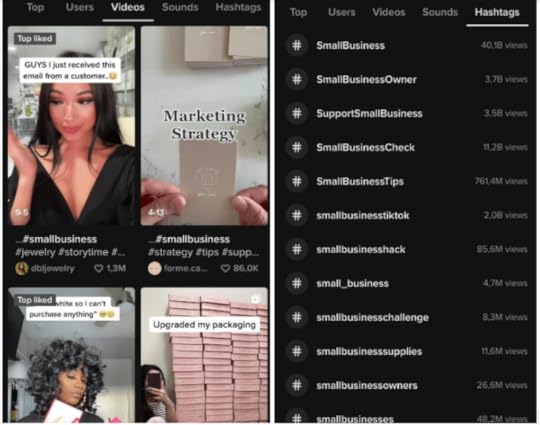
A distinguished lawyer from Ostroff Law became known as “The TikTok Lawyer” and currently has over 200,000 followers, with his profile providing a direct link to sign up for a consultation:
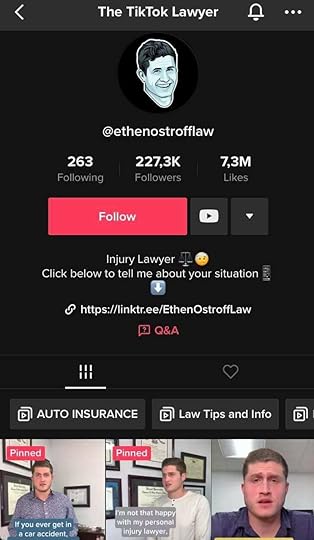
There’s even a Tiktok community for equipment rentals, with #equipmentrentaltiktok at 8.5 million views currently:
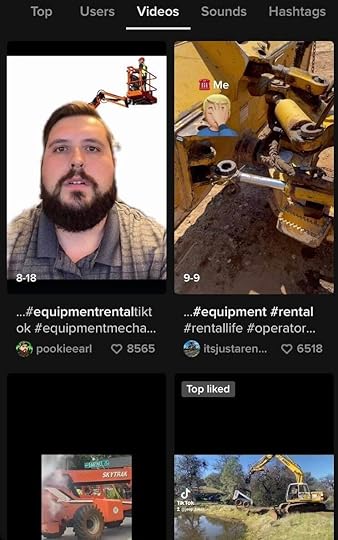
Simply put, it’s highly likely your target audience exists on TikTok – perhaps in the millions. The key to finding them is using the platform yourself or hiring an experienced TikTok advertising agency in order to discover your niche, the hashtags they use, and the content they enjoy.
2. Prepare to Create a Completely Different Marketing StrategyTikTok is not comparable to Instagram or Facebook, and importing marketing methods and materials from other social media platforms will result in lackluster results. Businesses who want to make TikTok ads that convert need to create content that is native and authentic to the platform; brands who try too hard or who use traditional marketing methods can come across as out of touch or disingenuous. Inversely, businesses that create a TikTok marketing strategy and tap into the platform’s whacky trends or unconventional humor the right way can become instantly popular.
Luckily, this means that unpolished vs. professionally made videos actually perform better. In fact, the more your ads and marketing materials look like a typical user’s uploads, the more traction you’re likely to get. Take a look at some of RyanAir’s TikToks, for example. Most marketers would shun the idea of making fun of their own customers, but users responded very well to their joke, which features trending audio:
@ryanairSmh like plz pipe down!
#airline #cabincrew #ryanair #autumn #foryou
That’s not to say that advertisements have little to no effort involved, however. The most important aspect of marketing on TikTok is being creative and engaging. It can take some getting used to in order to find the balance between a well-thought-out video that fits TikTok’s style and still feels casual, but adapting your brand’s idea of marketing in this way is beneficial beyond TikTok. You can recycle and repost TikToks as successful ads on other platforms like Facebook – just not the other way around.
3. Don’t Be Too Cautious With Your TikTok AdvertisingBusinesses have reason to be apprehensive about advertising on TikTok: the ad manager is relatively new and still in development, the style of marketing required is completely different, and TikTok’s reputation is not very professional. It makes sense that a business wouldn’t want to sink a lot of resources on an experimental platform, but not investing enough time, money, and effort into your TikTok advertisements can ruin your chances of success before you even make them.
If your business is hesitant but curious about advertising on TikTok, create a brand account and upload regular, non-promoted videos instead of starting with small budget ads. Upload regularly and explore the platform to get familiar with creating content. This takes time and effort, but it takes the monetary risk away and helps build your brand’s reputation. Regardless of whether or not they run promotional campaigns, successful business accounts upload videos and engage with their audience consistently:
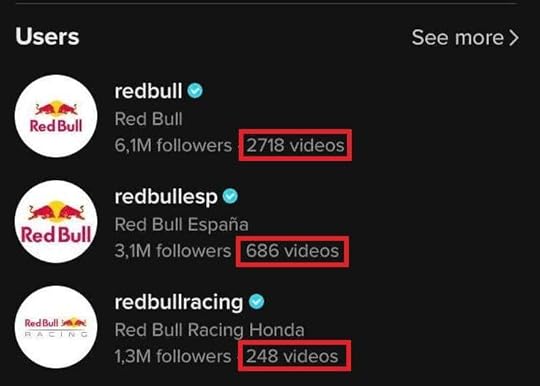
Once you’re familiar with TikTok and have a good idea of what content works best for your business, you can properly invest in promotional ad campaigns with more confidence. Worst case, you might find that TikTok simply isn’t the platform you need and focus your marketing budget elsewhere. Alternatively, you might find more success with the help of TikTok influencers who already have established audiences versus creating your own advertisements on TikTok.
Wrapping UpWith Facebook and Instagram losing a lot of their advertising appeal recently, Tiktok is waiting for businesses of all shapes and sizes with open arms. With the right perspective, strategy, and effort, your brand can increase your sales and revenue and increase brand awareness just by uploading a few videos. Contrary to popular belief, TikTok’s advertising space is not only beneficial to businesses catering to Genz; but you may find the platform isn’t right for you if you cannot keep up with the platform’s fast-paced nature or adapt to its unique (and often unconventional) style of content.
As the company continues to broaden its appeal to businesses of varying industries, It’s only a matter of time before businesses catch onto TikTok’s potential and wide appeal. Right now, forward-thinking marketers are enjoying minimal competition and maximum reach comparable to Facebook in the early 2010s, so now is arguably the best time to start advertising. Even if you determine TikTok isn’t right for your brand at the moment, be sure to check in often – the digital world evolves quickly, and you may find the platform perfect for your marketing campaigns in the near future!
September 21, 2021
Amazon Product Advertising for New Items & Stores: 5 Keys to Success
74% of shoppers start searching for their next purchase on Amazon.com, and the amount consumers spend on the platform increases every year. For this reason, recognition and popularity on Amazon can have a snowball effect on sales and profit that you can’t get anywhere else – so much so that brands can go from obscurity to social media fame through clever Amazon product advertising.
Getting the ball rolling if your brand or product is new to Amazon can be a huge task, however. If not handled correctly, it’s an obstacle that can end a seller’s success on Amazon before it even starts.
So how do you promote a new product on Amazon that customers don’t even know to search for? How do you get those first few buyers to click on your brand new store?
Starting fresh isn’t easy, but it doesn’t have to be complicated. If you want to get started on the right foot with your new store or product, here are the 5 key areas you need to cover:
1. Demand for the Brand

Source / Unsplash
If consumers don’t know to look for your brand on Amazon, it will be much harder to start building up a reputation on the site. Be sure to use your social media, newsletters, and other customer engagement methods to let people know they can purchase your products on Amazon. Dedicate posts for Amazon product advertising specifically, or to draw attention to your entire Amazon store.
For larger brands: Even if your brand has a solid offsite presence and following, not advertising your Amazon store can result in you losing out on an untold amount of sales. For example, your loyal customers might make larger purchases on Amazon than other platforms, especially Prime members. Directing customers to Amazon to buy and leave reviews also gives your store a reputation boost to help tap into Amazon’s millions of potential new buyers.
For new or smaller sellers: Be sure to create a social media presence on platforms like Instagram, Facebook, TikTok, or Snapchat so you can start building up organic awareness and demand for your brand. Advertising Amazon products on TikTok is especially effective for many brands, so focusing on a TikTok presence first and foremost might be a good idea if you don’t know where to start.
2. Great PicturesThis is a common piece of advice that sounds like common sense, but knowing what makes a picture “good” in this context is easier said than done. The first and most important step is ensuring your photos meet Amazon’s product image guidelines. Still, even if you have satisfactory images, you’d be none the wiser that you could be doubling sales on Amazon by changing minor details like angles, lighting, and color.
If you’re a small-scale store with a limited budget: Get a professional photographer who has experience taking pictures for Amazon product advertising. They’ll be familiar with guidelines and best practices like color psychology in marketing to make sure your products shine, and the investment can have a vast, long-term payoff for your store’s success. There are plenty of talented and experienced photographers on platforms like Fiverr with varying degrees of service to match any budget.
For larger brands and businesses: Keep in mind that your best photos that deliver results on other platforms may not necessarily be optimized for Amazon product advertising. For this reason, consider investing in new product photos when creating your Amazon page.
3. Product reviews
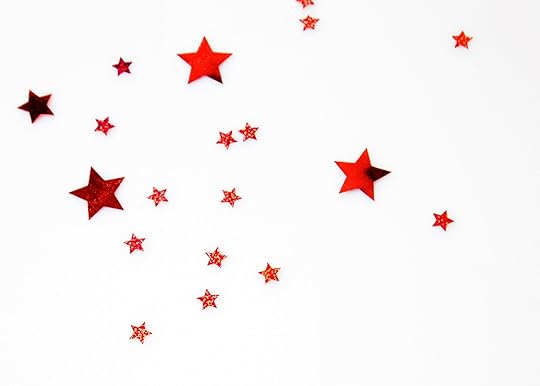
Source / Unsplash
57% of Amazon shoppers consider reviews a key factor in whether or not they make a purchase, and they establish credibility both in terms of your product quality and your reputation as a seller. Luckily, Amazon encourages buyers to leave reviews for purchased products by sending requests and through the Early Reviewer Program.
To enhance your Amazon product advertising and get reviews faster, you can request buyers to make a review throughout the purchase process. One successful way of doing so is by leaving product inserts (e.g., a note within the buyer’s package). Just keep in mind that it is completely illegal according to the Federal Trade Commission to ask a customer for a positive review in exchange for discounts, rewards, or any other form of imbursement.
4. Good keywordsUsing the right keywords ensures that customers can find you. They are vital for ad targeting on Amazon, indexing, and product descriptions.
Creating an SEO-optimized Amazon listing isn’t as simple as importing keyword lists meant for platforms like Google. Amazon SEO optimization differs from other platforms in several ways. Most importantly, users are in a completely different part of the sales funnel when searching on Amazon compared to other platforms, which means they often use different terms and phrases.
How do I find good keywords for my Amazon products?For simple ways to find the best keywords for your Amazon products, consider the following:
Start with interest-targeted ads
Running a low-budget Product Display Ad on Amazon can find keywords for you and double as a promotion for your product in the process. All you have to know is relevant categories for your product(s), and the platform’s algorithms will determine over time which audiences it thinks your listings are most relevant for. You can access essential information about these audiences – including search terms and keywords – and use this data to enhance your product indexing on Amazon.
Competitor Research
Keywords are also fairly noticeable throughout a product’s description, tags, and even Q&As or reviews, and they’re an important part of Amazon product advertising. Take the time to find competing stores and products, paying particular attention to headings and product descriptions. After reading through a heavy handful of them, you will get a better idea of what keywords and terms your competitors think customers are searching for.
Keyword Tools
There are plenty of keyword tools available online for you to leverage as well. Merchant Words, for example, remains a common and easy-to-use keyword finder for Amazon sellers. SEO platforms like SEMRush, Ahrefs, or Helium10 provide data-backed, professional-level keyword research and management capabilities at affordable prices if you have the time to learn how to use them yourself.
5. High Search Rankings

Source / Unsplash
40% of customers never scroll past the first page of Amazon search results, and over 90% don’t go beyond the second page. Simply put, the higher your products rank in Amazon search results, the more money you will make. Luckily, if you’ve already covered previous points like reviews and keywords, you’re already well on your way to getting a ranking boost from Amazon’s algorithm!
If you want to propel your products to the top of search rankings quickly, don’t overlook the importance of advertising on Amazon. Unlike Google, your organic rankings for searches on Amazon are impacted by whether or not you’ve advertised on Amazon. Amazon PPC ads are your best bet for improving product rankings for keywords and search terms.
Other benefits of Amazon product advertisingAmazon isn’t merely one of the world’s largest retailers; it’s also a leading advertising platform. The company invests heavily in expanding its ad influence, and it has some of the best consumer data on the market. Through Amazon, your ads are directed to audiences with a history of searching for or buying similar products and are delivered exactly when buyers on Amazon are looking to make their next purchase. For this reason, most successful brands dedicate a lot of time and effort to their marketing campaigns on Amazon or consult the expertise of an Amazon advertising agency to optimize their sales and revenue on the platform.
Are Amazon marketing services good for beginners?If your brand is new, you’re new to selling on Amazon, or you’re selling a brand new product, you should consider advertising on Amazon. Even brands with no presence on Amazon stand to benefit immensely from Amazon advertising. Not only do you get the opportunity to promote your product directly through the platform, but you also get access to precious data that you can’t get anywhere else. Several advertising options on Amazon are available to fit different campaign goals and starting budgets, which makes it accessible for brands of all sizes.

Source / Advertising.Amazon.com
ConclusionWhether it’s your product, store, or entire brand, getting noticed on Amazon can be challenging. No matter what size your brand or advertising budget is, you have plenty of ways to use Amazon product advertising to your advantage. This roadmap ensures you draw those first key customers in and create a path for an excellent reputation as a popular seller on Amazon in the long term. Once you get the ball rolling, don’t forget to check out these 5 Amazon marketing strategies proven to increase your sales and revenue!
September 9, 2021
Color Psychology in Marketing


Color has a major influence on people, and when it comes to marketing, the colors you use will impact the choices consumers make. In this article, we’re going to talk about the psychology of color in marketing, how it’s used by leading digital advertising agencies and experts, and what tactics you should consider for your own branding and graphics. Let’s get into it!
Is Color Psychology Real?Yes! Colors appeal to the emotion sensors in the brain, and all sorts of outcomes are possible. A certain color, like red or yellow, can pull your attention to something specific, while other colors may be reassuring, cause a particular emotion to rise up, or remind you of something from your past.
Color psychology most often relates to how people experienced different colors during childhood, and those feelings carry over into adulthood. For example, red is associated with firetrucks and yellow may be associated with the sun or a school bus. These associations are what color psychology is built on.
It’s important to note that different cultures have different associations, so what a color means to one person may mean something else – worse or better – to someone from a different part of the world. This is especially important to keep in mind if you advertise to an international market.
How is Color Psychology Used in Marketing?When it comes to color psychology in marketing, the hues you use can make or break the message you’re trying to send. And it’s about more than individual colors, too. The color combinations you choose and even how much of each color is included can influence consumers.
Let’s start with a brief color emotion guide to better understand the psychology of colors in marketing:
Black: Elegance, finesse, luxuryBlue: Airiness and freshness or knowledge and leadership (depending on the shade)Green: Balance, environment, harmony, nature, refreshmentOrange: Happiness, movement, playfulness, vibrancyPink: Happiness, positivityPurple: Honesty, power, religion, royalty, well-beingRed: Endurance, importance, power, protectionYellow: Creativity, liveliness, optimism, playfulness, vibrancyWhite is also an important part of marketing color schemes, mainly for the negative space it creates. It’s often used as an accent or background to the rest of the design. Graphics without any white can be too bold and overwhelming; complementing a design with white (or a shade of white) can make the imagery easier for the brain to process.
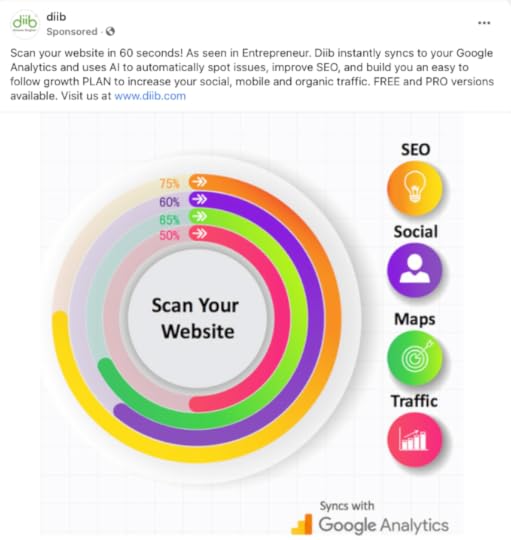
That said, the absence of white can be purposeful so that the graphic is forceful:
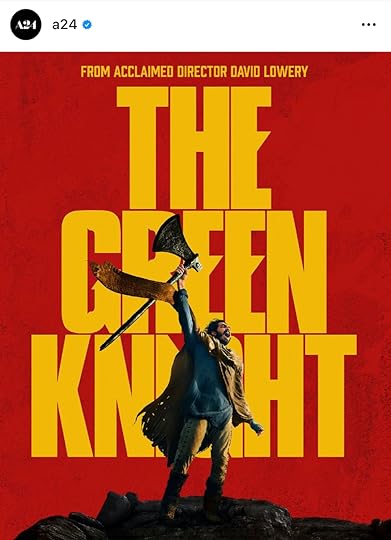
A24 / Instagram
Lifehacker has a great color psychology chart here .
Color NuancesEven though certain colors often relate to a particular set of reactions, you have to take nuances into consideration.
For example, while yellow may often represent happiness, it can take on a completely different connotation depending on how it’s used. Coupled with a scary image and huge, bold text, it may become aggressive rather than happy. In this example, the yellow is bold and powerful rather than cheerful.
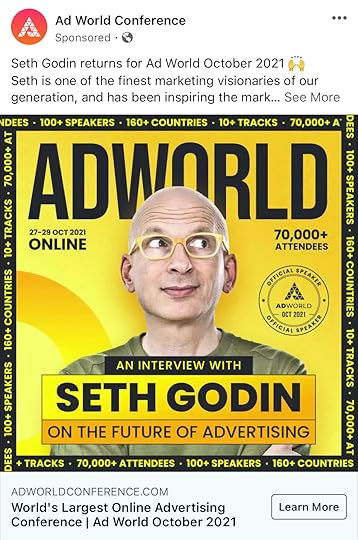
Ad World Conference / Facebook
Another example involves the color red. Depending on the imagery and text you couple red with, it can be positive and exciting or negative and a warning.
Color Combinations
Each color falls into one of two categories:
Cool: Blue, green, violet.
Warm: Orange, red, yellow.
Cool colors represent clear skies, ice, nature, and water. They make everything feel big, clean, and fresh. Warm colors represent fire, heat, and sunsets. They make everything feel comfy, cozy, and inviting. To create harmony, cool and warm colors are often used in the same graphic.
Complementary cool and warm colors come from opposite sides of the color wheel. For example, red is a good complement to green, blue is a complement to orange, and yellow is a complement to violet. When using complementary colors, try to make one take up 80% of the design and the other only 20%. This balance makes the imagery easier to look at than if it were split 50-50.
Multicolored Graphics in Marketing
What happens if you combine (almost) all of the colors? You get a youthful graphic that conveys fun, and you tell consumers that your brand is spirited.
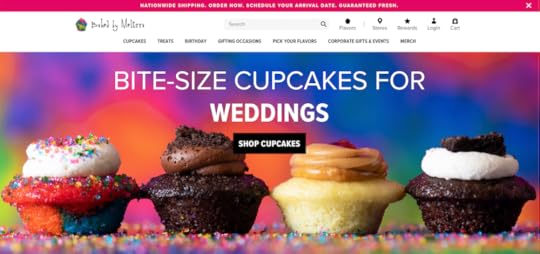
Source / Baked by Melissa
However, the purpose of a multicolored graphic could be to catch your attention. Visme isn’t nearly as fun a company as a cupcake maker, but they use various bright colors in this infographic to make it eye-catching.
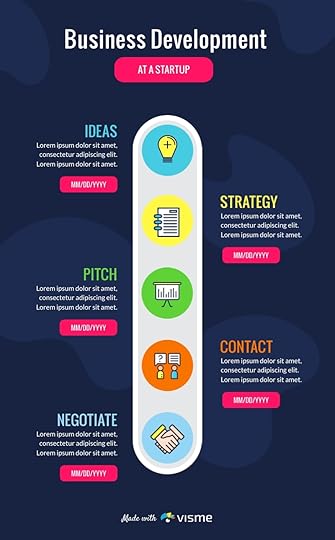
Source / Visme
Why is Blue Such a Popular Color for Designs and Logos?Blue is a common branding and marketing color because it can have all sorts of associations. Sky blue can give a refreshing, open-air feel, while navy blue is associated with knowledge and leadership. Pastel blue is often used for children’s brands.
Corporate and tech brands use blue because it’s a pleasing color that’s not polarizing and that communicates intelligence, reliability, and trust. And health organizations often use soft blue hues because they’re mild and clean.
What Are the Best Colors for Call-to-Action Buttons?Many call-to-action (CTA) buttons are red because the color stands out, is easy to spot, and conveys a sense of importance. In the example below, the “Get the ebook” CTA button is in red.
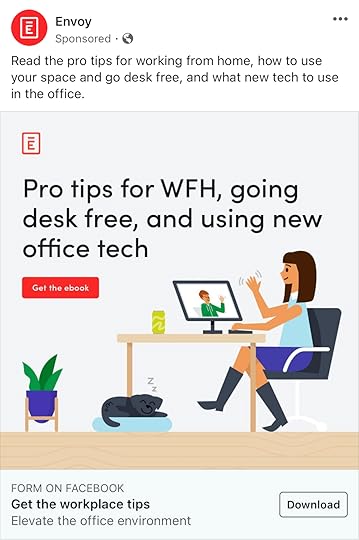
Source / Envoy / Facebook
In general, if cool and warm colors are used in the same graphic, one or the other should be used on the CTA button. In the example above, the illustrations are in cool blue, while the CTA is in warm red.
Wrapping UpColors and emotions are inextricably linked. Choosing the right colors for your brand and marketing collateral is just as important as the wording you use – possibly even more important since the colors will be viewed and processed by the brain before the text. Understanding color psychology marketing can help you choose the color schemes that will positively represent your brand and make the biggest impression on consumers.
Want to dive further into the world of marketing theory? We have six more for you to explore in this blog post!
August 31, 2021
How to Create TikTok Ads That Convert: 5 Tips and Examples
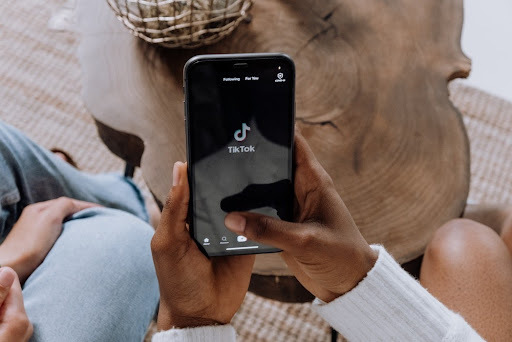
Source / Cottonbro at Pexels
Smart brands have turned to TikTok for advertising and marketing, appealing to a younger audience that loves to digest video content. If your core customers are under the age of 30, this is one social platform that you don’t want to ignore.
We’re going to explore five ways to create TikTok advertisements that convert. Then, we’ll answer a couple of FAQs to help you round out your TikTok marketing strategy.
1. Understand Why Some Native Content is So PowerfulTikTok ads look and behave much like native ads, and that’s the point – they’re supposed to blend in and be just as appealing as the other content on the platform. That said, to create a successful TikTok ad that converts, you have to understand why high-performing native content does well because you’ll use the same approach to creating your ad content.
Chipotle jumped on a popular TikTok trope with this point-of-view video, and the company made sure to keep it brand-related. The Washington Post does a phenomenal job of this as well. While they report on serious news topics, their TikTok is creative and fun, perfectly aimed at the audience that’s watching.
2. Partner With a TikTok (Micro) Influencer

Source / Laura Chouette on Unsplash
TikTok influencer marketing can be a big help when it comes to getting your content seen and making it go viral. But you don’t have to only choose influencers with massive followings and the blue-and-white “verified” checkmark. For smaller brands that are just getting started and have a limited ad budget, connecting with a micro-influencer is still plenty powerful. Instead of follower numbers, pay attention to engagement. Do their posts get a lot of interaction despite the follower count being low? Quality is more important than quantity for influencers of any size.
This post from shoe brand Vessi features a popular TikTok personality who often creates funny videos where she plays multiple roles. Vessi recognized that @kallmekris’ regular content got a ton of attention and capitalized on that to promote their brand.
3. Use Social ProofToday, few things are as powerful as user reviews. It’s one thing for a brand to tell you about itself, but it’s another for an actual customer to provide feedback. Brands that add social proof into their advertising and marketing campaigns show that there are plenty of people who think highly of the business, which is encouraging to potential users who may be on the fence.
Postmates took the opportunity to share their customer feedback this post, which shows its Don’t Cook Book along with comments from fans.
4. Create FOMOIf you want someone to buy your product or service ASAP, give them a dose of FOMO (fear of missing out). And make sure that they need what you sell in order to participate.
The Sabra hummus brand does this well with its food prep and cooking videos. Their recipes and suggestions revolve around their hummus flavors, so in order to DIY at home, you’ll need to run to the grocery store to pick up a container. Since this type of conversion is hard to track, it’s a great time to create a branded hashtag ad so that those who do purchase the product will be inclined to share their creations on TikTok.
5. Call Out the Call to Action
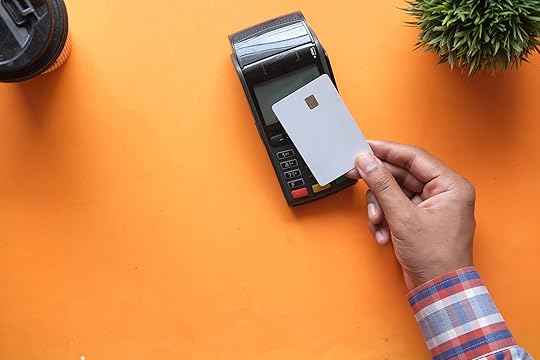
Source / Towfiqu barbhuiya on Unsplash
One of the simplest ways to get users to take the action you want them to take is to tell them what to do via a call to action.
This post from Vineyard Vines does exactly that, directing users to the link in the bio if they want to shop for back-to-school looks. You can make this even more visually appealing by adding the directive into the video instead of just putting it in the caption, like Messenger does in this video.
Also, limit your CTAs to just one per video. You don’t want to ask your audience to do too much. Clicking a link or downloading an app is plenty – more than one request, and you could confuse and lose your viewers, which means they won’t take any action or all.
How Can Brands Make the Most of TikTok? Marketing to an International AudienceTikTok has 800 million active users each month, and a majority of them are overseas. That makes TikTok a prime place to market products and services that can be shipped and/or used outside of the country. Plus, by putting out content for non-English speakers, you can reach a larger demographic and connect with customers you may not have attained otherwise.
Is TikTok Good for Advertising? Appealing to High-EarnersWhen it comes to advertising on TikTok, there’s a good opportunity to see a high ROI. Despite TikTok’s audience being on the younger side (most U.S. users are between 18 and 24), a majority of TikTok’s user base earns a lot. 37% of adult users (over 18 years old) earn $100,000 per year or more, and more than 23% earn between $60,000 and $100,000 per year. That means that higher-priced and luxury items have a chance of being marketed on TikTok effectively. If you’re not sure how to go about this, consider hiring a TikTok ad agency to get you on your way.
How to Use TikTok to Market Your Business: Final ThoughtsWhen you create ads on TikTok, the more engaging they are, the more likely it is that your audience will actually see it – that’s how the TikTok ads algorithm seems to work. Higher-quality ads get higher billing, which means you can’t simply pay your way to the top. But investing time and resources into TikTok ad creation is about more than just getting eyes on it. Having a compelling, interesting and perfect-for-TikTok ad means that users will watch it in its entirety and then take the next step to move through your digital marketing funnel.
Want to learn more about how to create ads on TikTok? Check out our articles about growing your business with TikTok marketing and how to choose a TikTok advertising objective.
August 25, 2021
Amazon Holiday Deals 2021: The Smart Seller’s Guide


Have you created your Deals for Black Friday and Cyber Monday on Amazon yet? If you haven’t, you could be missing out on a huge boost in holiday sales. Submissions for Deals this holiday season are due September 17th at 11:59 PM (PST), so now’s the perfect time to get acquainted with your options for creating Deals on Amazon this holiday season.
But Amazon holiday selling goes beyond Black Friday and Cyber Monday Deals. That’s why this guide covers it all – from Amazon Holiday Deals options, requirements, and fees to unlocking foolproof ways any store can prepare for holiday shoppers.
The Season With Year-Round ImpactLast year, eCommerce saw a 35% increase in holiday sales, and this trend is expected to continue in 2021. For Amazon sellers, the holiday shopping season can bring equally impressive numbers. Not only are Black Friday and Cyber Monday huge events on Amazon, but the entire holiday season from November to January can set the tone for your store’s popularity and profit for years to come.
What should Amazon sellers expect from Black Friday and Cyber Monday?Even if you’re not new to selling on Amazon, there are a number of changes and challenges the holiday season can bring. The three most common are:
Increased competition. Every business both on and offline brings their A-game for the holidays. Even if your offers are competitive throughout the year, your competitive advantage can change drastically come November as stores slash prices and invest more heavily in promotional campaigns. Increased number of returns and order cancellations. Because Christmas is a gift-giving holiday, there will be more instances where people buy on a whim without doing research. This means more returns and order cancellations during the holiday shopping season than usual.Decreased profit margins. Total sales may go up, but that doesn’t always translate to more revenue. Competing during the holidays requires some sacrifice – sometimes even resulting in profit losses for select products. Proper planning can ensure that your Black Friday & Cyber Monday strategy is an overall net gain for your business. Amazon Holiday Deals: Seller Options
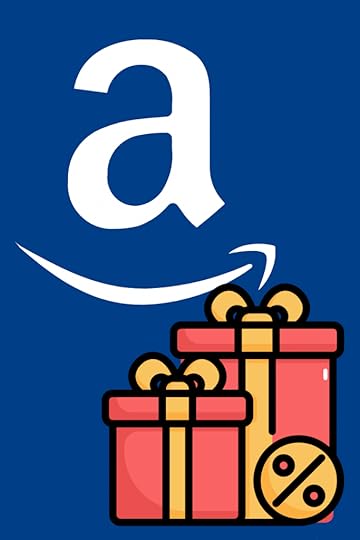
It’s the perfect time of year to leverage Amazon’s Deal options if you’re an FBA seller. There are two main types of Deals you can create:
Lightning DealsLightning deals are exclusive, time-sensitive discounts promoted by Amazon. Amazon advertises these deals through multiple channels like e-mail, social media, and throughout Amazon.com.
For Black Friday and Cyber Monday, Lightning Deals can run for a maximum of 12 hours. Sellers are limited to one Lightning Deal submission for Black Friday & Cyber Monday, but you can submit your Deal for both weeks. Amazon determines the day that your Deal is promoted, and if you submit your Deal for both Black Friday and Cyber Monday, it will only run for one day throughout the entire two weeks.
Requirements
20% minimum discount. The discounted price must be the lowest price in 30 days and either match or beat the lowest price of the year.Enough quantity to last the duration of the Lightning Deal (amount varies depending on the product).3.0-star or higher product ratingImages must adhere to Amazon’s style guide (e.g., no text within the image)Fees
Because Amazon determines when to run your Lightning Deal, you won’t be able to know the exact cost until it is scheduled. However, you will be notified by October if your Deal was selected and for what day. You can cancel it for a full refund if you aren’t satisfied with the selected date.
Deals on Black Friday or Cyber Monday: $500 per dealDeals on the week of Black Friday/Cyber Monday: $300 per deal7 Day DealsAs the name implies, 7-Day Deals run for several days throughout the week of Black Friday or Cyber Monday. These longer-term sales are featured on Amazon’s Deals Page and run for a maximum of 7 days.
Requirements
15% minimum discount. Discounted price must be the lowest price within the past 30 days and match or beat the lowest price within the past 60 days.Enough quantity to last the maximum duration of the 7-Day Deal (varies depending on the product)3.0-star or higher product ratingImages that adhere to Amazon’s style guide (e.g. no text within the image)Fees
$1000 per Deal
Advantages of Holiday Deals for Amazon SellersBetter Ranking & Visibility
Amazon Deals offer merchants an easy way to gain higher rankings in Amazon’s search engine. It’s a near-guaranteed sales boost that provides a shortcut to more and better reviews, or even a Best-Seller Badge. Better yet, Amazon targets Deals using its consumer data, which allows sellers to reach the right customers for optimized engagement rates.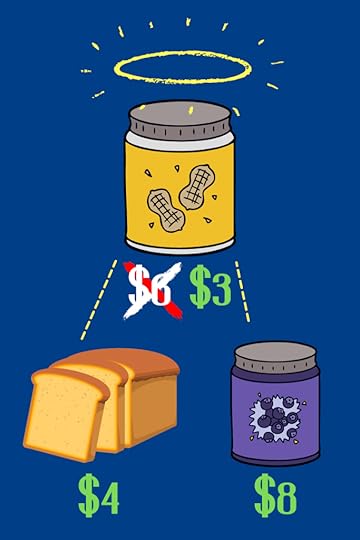
Creating a Halo Effect
Selling one hot item is great, but think about what happens when your store is featured as a deal offer. It’s almost like the entire catalog gets put under a halo effect – all of them benefit from increased interest and visibility due to the popularity of the promotion. This means better sales across your whole catalog thanks to increased exposure!
Moving Inventory
Even the biggest and best sellers end up buying inventory they can’t sell. It sits on their shelves for months, taking up space and costing money to store it in the meantime.
Selling inventory at a discount on Amazon is an easy way to move products that you might be desperate to get rid of. Moving inventory makes sense when you think about it – if you’re paying storage fees for items collecting dust, the costs avoided by selling them can make up for the lower profit margins. You decrease costs and gain more sales; a win-win situation that increases overall revenue.
Potential Disadvantages of Holiday Deals on Amazon

Requirements vs. Reward
Amazon Deals have an undeniable potential to boost sales, but that might not make up for discounts and investment costs in certain cases. Depending on your store, the size of your operations, and average sales, Amazon’s Holiday Deals might be more headache than help. Meeting the requirements alone can be difficult, and if you’re not already eligible for Deals, meeting them in time for the September deadline is a lot of work.
Lack of Control
You may have noticed how vague certain aspects of Amazon’s Holiday Deals are. Lightning Deals can run for 12 hours, but they rarely do. Similarly, 7-Day Deals can run for the entire week but are more likely to run for about 4 days. That’s because your Deals are entirely in the hands of Amazon once you submit them, and optimizing deals for customers comes before promoting your deal to the fullest extent. For both Lightning Deals and 7-Day Deals, you’re charged a flat rate of $300, $500, or $1000 regardless of when Amazon cuts your promotion off. For how strict the requirements are, it can be frustrating to have no solid commitment to your investments in Deals.
Increasingly High Standards
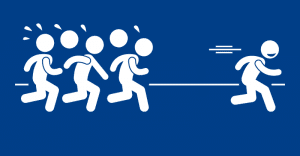
Getting a shoutout via Amazon Holiday Deals is becoming increasingly competitive. Even if you’re following the best practices for selling on Amazon, you’re likely competing with submissions from sellers that are taking risky profit losses for more enticing offers, or from stores using extensive SEO and professional marketing for their product listings.
This leaves many Amazon sellers in a tricky position: Their deals might not meet sales expectations even if they were accepted because the seller lacked the time and resources to professionally optimize their listings, or they couldn’t afford to match steep discounts.
Preparing for the Holidays: Important To-Do’s For All Amazon SellersBeyond Amazon Deals, Sellers have a multitude of points to cover to prepare for the holidays. For Sellers not eligible for Amazon Deals, this is good news – you have plenty of other ways to make your products stand out! Here are the four main points to cover as Black Friday & Cyber Monday approach:
Optimize your listings. This can mean increasing prices, but it can also mean making sure titles and bullet points are well-written and keyword-optimized to encourage sales. Prioritize the items in your catalog that you anticipate being most popular over the holiday season.Prepare your inventory. Restock key items at least 2 months in advance. For FBA sellers, check your restock reports and take necessary measures to increase your chances of qualifying for one-day shipping.Offer competitive and timely delivery (if you manage your own shipping). 44% of customers regularly use same-day shipping and 79% are enticed by free delivery offers, so fast and cheap (or free) shipping is a must over the holidays. Consider increasing your product prices or temporarily decreasing profit margins to cover shipping costs – the majority of customers will choose a higher-priced product with free shipping versus a discounted product without. Plan your promotions and discounts. Increase the visibility of your store by formulating a winning Amazon marketing strategy. Create promo codes, coupons, and/or limited-time offers for select items. Take extra time and care to create high-quality Amazon ads that compete at a professional level and consider the latest trends.Wrapping UpAmazon Holiday Deals are an excellent option for eligible FBA sellers with optimized listings. Lightning Deals and 7-Day Deals are a great way to move inventory, increase visibility, and boost sales at a flat fee. However, the requirements mean that many sellers don’t qualify. Even for eligible sellers, fierce competition and lack of control over the campaigns can make them impractical or undesirable.
Luckily, there are many other ways to take advantage of the increased traffic over the holiday season both for sellers who make Amazon Deals and those who do not. Preparing inventory, optimizing listings, and offering fast and free delivery will ensure your store is ready to reap the benefits of the holiday season and stay ahead of the competition. Sellers seeking more transparency and control over their holiday promotions can consult an Amazon advertising agency to create campaigns that prioritize their budget and goals to attract buyers and increase revenue.
If you want to keep up to date with the latest in digital advertising trends on Amazon and beyond, sign up for our weekly newsletter below – we’ll keep you in the loop!
August 18, 2021
The Best Time to Post on Instagram in 2021: What Top Results Don’t Tell You


Knowing when to post on Instagram can effortlessly boost engagement and views. You need to ensure your compelling content is popping up on your audience’s Feed, so timing matters. There’s just one problem: each research article and search result has a different answer for what the best time to post on Instagram is.
The truth is that the algorithm has become so personalized when ranking posts, you need to find your peak posting times on Instagram. Luckily, doing so is shockingly easy. First, let’s go over how Instagram’s ranking system has changed in 2021 that has made this question so hard to answer. Then, we will lay out your winning strategy to finding the best times to post on Instagram and how to optimize your post uploads for maximum views and engagement.
When is the Best Time to Post on Instagram?If you’ve been searching for optimal times or days to post on Instagram, you probably found some confusing results. Even the first page of Google search results conflict with each other.
No one agrees on what’s the best day to post on Instagram:
Sprout Social: TuesdayContentCal: WednesdayInfluencer Marketing Hub: ThursdayNo one seems to agree on what the best times to post on Instagram are either. Here are some of the top results we got for each day of the week (in local time):
Best Times to Post on Instagram on Sunday (According to):
HubSpot: 8am – 2pmMySocialMotto: 10am – 4pmBrand Mentions: 3pm – 9pmBest Times to Post on Instagram Monday (According to):
HubSpot: 11am – 2pm MySocialMotto: 6am, 12pm, 10pmBrand Mentions: 11am, 9pm, 10pmBest Times to Post on Tuesday (According to):
HubSpot: 10am – 3pm, 7pmMySocialMotto: 6am – 6pmBrand Mentions: 5pm, 8pm, 9pmBest Times to Post on Wednesday (According to):
HubSpot: 7am – 4pmMySocialMotto: 8am, 11pmBrand Mentions: 5pm, 9pm, 10pmBest Times to Post on Instagram Thursday (According to):
HubSpot: 10am – 2pm, 6pm – 7pmMySocialMotto: 7am, 12pm, 7amBrand Mentions: 4pm, 7pm, 10pmBest Times to Post on Instagram Friday (According to):
HubSpot: 9am – 2pmMySocialMotto: 9am, 4pm, 7pmBrand Mentions: 6pm, 10pmBest Times to Post on Instagram on Saturday (According to):
Hubspot: 9am – 11amMySocialMotto: 11am, 7pm – 8pmBrand Mentions: 3pm, 6pm, 10pmAll of these answers are based on thorough research of millions of posts. So why are they so different?
The Right Time is Different for EveryoneMost of these “best times to post” are determined by peak activity or engagement rates worldwide. However, peak hours can vary greatly depending on the time zone, age group, or industry of different audiences, and can also differ depending on what you’re posting. Though timing your Instagram posts is still important, knowing the right time requires more careful consideration of your audience and your content.
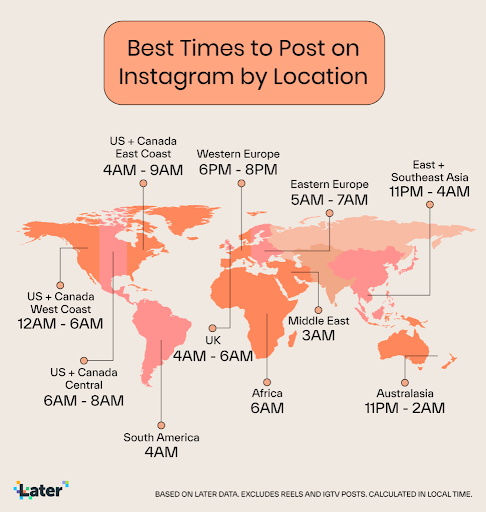 Source / Later.com
Source / Later.comThis leads to such wildly different results for each post, account, and individual user Feed regarding the best posting times on Instagram. It’s no wonder each “best” time and day to post on Instagram is so different from each other depending on the source!
Instagram’s Algorithm is Constantly ChangingEven when factoring in details like location and industry, most advice online suggests posting during peak hours of your audience’s activity. This was a fail-proof strategy back when Instagram’s ranking system favored rapid interaction; posting right when your audience was scrolling promoted the fastest rate of engagement within the first 30 minutes. But Instagram’s algorithm in 2021 is not that simple, and this strategy could actually be stifling your engagement rates.
Recent findings from Later found that the best times to upload are becoming earlier and earlier – sometimes as early as 5 am in local time. It’s not exactly clear why this is, but it’s likely that as the algorithm continues to favor quality engagement, hours-old content with better engagement can easily outrank fresh content on the Feed. In other words, posting on time might actually be posting too late.
How To Know When to Post on Instagram: 4 Easy Steps Source / Elena Choycheva on Unsplash.com
Source / Elena Choycheva on Unsplash.comIf you want to find the best times to post on Instagram, you need to use a strategy that matches the way Instagram is also ranking your posts. You can do so by focusing on a few of the core factors Instagram uses in order to rank content and create a complete posting schedule in the process. Here are 4 easy steps to help you find the best time to post on Instagram today, tomorrow, and beyond:
1. Find Your AudienceKnowing your audience(s) will give you a better idea of when to post on Instagram than global data. If you have a business account, take advantage of Instagram Insights to evaluate your audience and engagement. Take a look at your competitors or other brand accounts in your industry and when they’re posting to fill in any gaps your own performance data may be lacking.
If you are using a personal account, take a detailed look at your followers and their accounts. In many cases, their public information is more than enough to find key insights into your target demographic like their general location, age range, and interests. Ask yourself when they’re most likely to be scrolling through their Feed based on this information. For example, if your audience is younger, you can assume that your posts will see more engagement before and after typical school hours, or during lunch breaks.
2. Post Early and OftenAs stated before, the latest research proves that Instagram no longer favors rapid interaction as much as it used to when it is ranking posts. Instead, promote quality engagement in order to be picked up by the algorithm by posting consistently throughout the week, 2-3 times per day.
Prioritizing one of your posts of the day for the early morning. For example, if you find that your audience is most active from 9 am to 11 am, the best hour to post on Instagram would be 6 am. By arriving before most of your competitors do, your content is more likely to get quality engagement from early risers. This boosts your post up the Feed just in time for the bulk of your audience to start scrolling.
3. Experiment with Post Tracking & SchedulingOnce you have a solid idea of who you’re trying to reach and a general idea of when is best to reach them, experiment with different posting times. After a few months of regular posting, you should be able to figure out key patterns that made some of your posts perform better than others. From there you can start creating a regular schedule for posting your content that will bring more engagement and new followers.
4. Use Expert InsightIf all of this sounds too time-consuming for your schedule, you have plenty of outside options to find your unique best posting times. If you are looking for a simple do-it-yourself method, smart scheduling tools or third-party apps can help you create and track your posting calendar.
If you are still struggling to make sense of your Insights or need more guidance, a knowledgeable Instagram agency can help. Their job is to constantly keep up with Instagram’s algorithms, your audiences, and trends that can help boost your Instagram engagement. Contrary to popular belief, even small brands or aspiring influencers can work with agencies to create a marketing strategy that fits within their budget and helps boost likes, views, and followers.
August 5, 2021
How to Get Your Product on The Amazon Internet Famous Page: 3 Examples


If you’re an Amazon seller or have an online store, you might want to check out the Amazon Internet Famous section. This secret selection is home to products that have become so popular that they’ve reached ‘internet famous’ status. It’s packed with products that went viral on social media—many made famous by marketing on TikTok, Snapchat, and Instagram.
But what makes these products so popular?
This article dives into how some Amazon products become internet famous, pointing out several of the company’s digital marketing strategies that have contributed to the success of these products. If these successful advertising strategies can help your business go viral and increase sales, why not take a look?
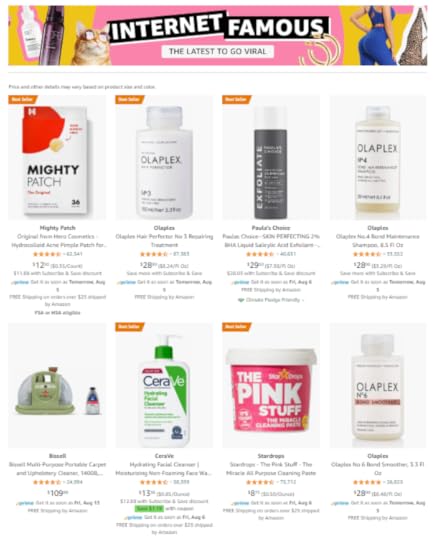
Source / Amazon.com
What do ‘Internet Famous’ Products Have in Common?The products in Amazon’s Internet Famous store all went viral for different reasons. Some are trending fashion statements; others have a particularly snappy name. But they all have one thing in common: a promotional strategy so native and fine-tuned to social media, that people couldn’t resist sharing and buying. Here are three prominent brands from Amazon’s ‘Internet Famous’ store that showcase the core components of a viral campaign.
1) Mighty Patch by Hero CosmeticsWhen Mighty Patch’s Acne patches launched on crowdfunding site Indiegogo, they had a modest goal to raise $5,000 in two months. When their crowdfunding campaign ended five months later, they had sold nearly one million patches — a massive success by any measure.
Mighty Patch’s TikTok channel has over 2 million followers. Combined with follower counts on Facebook and Instagram, the brand reaches about 4 million people. So how does Mighty Patch do it? By producing entertaining videos full of product tips and encouraging engagement wherever possible.
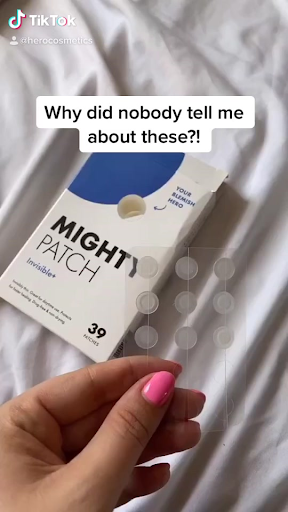
Source / TikTok.com
How Mighty Patch Became #1 on the Amazon Internet Famous StoreFor example, the company launched a campaign in 2019 using the hashtag #schoolsurvivalkit. This ‘Get Ready with Me’ campaign also featured morning routine videos – a popular influencer video format – that included their usage of Mighty Patches for overnight acne treatment. The cherry on top of Hero Cosmetic’s TikTok marketing campaign was a one-month giveaway of free acne patches to sign-ups with a .edu email address.
Hero Cosmetics focused on empathizing with its target audience and teens’ anxiety when going back to school after summer. It featured Mighty Patch as a part of a package of tips from trusted faces users were familiar with, making the advertisement feel native, authentic, and subtle. Lastly, the company created a campaign that encouraged user participation. This doubles as a source of quality leads and also further promotes the brand as users create and share their own content. The targeted campaign spoke directly to TikTok’s primary audience and led to an impressive 12% engagement rate, reaching over 4 million users.
2) The Pink Stuff Cleaning Paste by StardustIf you’re skeptical about whether a product beyond beauty and fashion can trend online, take a look at The Pink Stuff Cleaning Paste, a household cleaning product with a cult following on TikTok.
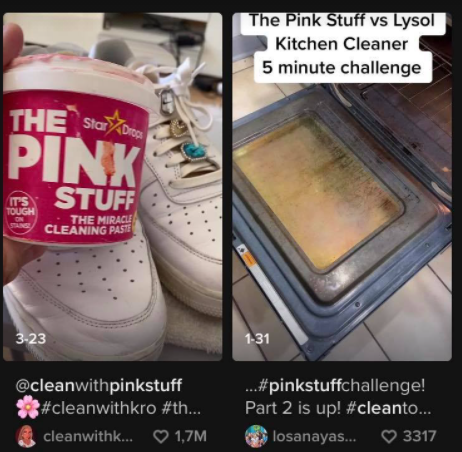
Source / TikTok.com
The Pink Stuff is a full brand of cleaning products made by Stardust, known for its unique look and smell as well as its effectiveness. The brand is mostly known for the Pink Stuff Cleaning Paste. Stardust’s unforgettable pink paste popped up repeatedly in trending content to solve everything from shoe cleaning to grout whitening. Curious viewers bought it and shared their own videos proving its quality and presenting new ways to use it. It wasn’t long before the brand was a best seller on Amazon, proving how vital finding your niche is to sell Amazon products on TikTok.
How The Pink Stuff Went Viral on TikTokUnlike the other products on our list, The Pink Stuff’s internet fame was accidental. The product was pre-destined for social media success due to its affordable price, versatility, and eye-catching branding. Its popularity was further aided by TikTok’s most undervalued trait – its niche communities. In this case, the “CleanTikTok” side of TikTok shared The Pink Stuff with the world. In this community, household cleaning hacks, before/after videos, and supremely organized spaces are shared and showcased.
The Pink Stuff’s success proves that social media trends aren’t exclusive to fashion and beauty. If you have a high-quality product with visually appealing packaging or branding, there is a niche community ready to broadcast it to millions of people. In this case, Stardust was lucky that the cleaning community of TikTok found its products organically. But nothing is stopping you from exploring the niche communities thriving on platforms like TikTok, Instagram, and Pinterest, who will happily advertise your products for you.
3) Olaplex Hair ProductsOne of Amazon’s newest stores, Olaplex Hair Products, sells products for healthier hair, including one that conditions strands after bleaching or straightening. Just six weeks after being added to Amazon’s store, Olaplex reached more than 10 million views, and its products are all over the Amazon Internet Famous store.
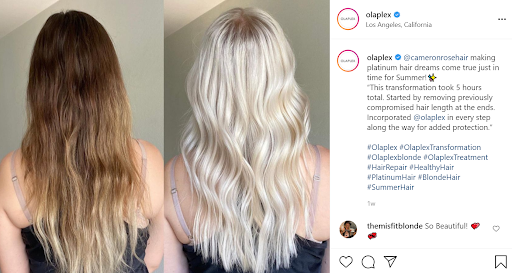
Source / Instagram.com
Olaplex’s Winning Social Media Advertising StrategySimilar to The Pink Stuff, Olaplex has gained internet fame by tapping into a dedicated audience. At-home beauty and hair care tutorials have existed on Youtube, Instagram, and other platforms for the better part of a decade. Bloggers and stylists have featured Olaplex products in their content since 2016. The company developed a direct-to-consumer marketing strategy focusing on these influencers and highlighting posts and videos of satisfied buyers.
Now that Olaplex has a good grasp of digital advertising, it has an intentional, viral-worthy campaign to follow with every new product release. Contributions from professional influencers give Olaplex a highly respected reputation in the beauty communities of major social media platforms, optimizing their organic reach. The company pairs this with a healthy amount of hashtag campaigns and paid sponsor ads highlighting videos, photos, and quotes from real people. By promoting user-generated content, Olaplex ads and posts blend perfectly into users’ social media feeds and achieved high engagement rates.
ConclusionIf you’re looking for an example of how to make a product go viral, look no further than these three sellers. They all used different strategies that helped their products Amazon Internet Famous status, and they can serve as great inspiration if you want your own product to succeed on popular social media platforms.
It’s possible to make your products go viral, but it will take a lot of work and creativity. With TikTok ads becoming increasingly popular, now is the time to invest in a TikTok ad agency before it’s too late!
July 27, 2021
Make a Call to Action that Sells: Best CTA Words, Phrases, Examples


A call to action (CTA) is your chance to turn a lead into a conversion. For this reason, it is an essential aspect of your marketing and advertising strategy. Whether it’s for email marketing campaigns, advertisements, or landing pages, a CTA is crucial to success, and a lackluster call-to-action can make well-crafted content fall short.
Writing the best call to action for your web content can be a little tricky, however. That’s why in this article, you’ll get to know more about what a call to action is. We’ll highlight some calls to action examples, how to write CTAs, and what an ideal call to action phrase looks like.
What is a call to action?A call to action is a marketing tactic and term that describes any design to prompt an immediate response or sale. CTAs can be graphical illustrations, phrases, signages on web content, ad campaigns, etc. It’s telling the reader of that blog post, ad copy, or ad video, “Oh, since you love this, here’s how you can partake in it.” Call to action statements guide the consumer of that content on how to buy what you are selling.
A CTA can be used in several instances, including blog posts, web pages, landing pages, copies, email marketing campaigns, online bios, etc. Recently, call to action social media posts are increasing in popularity as well.
It’s safe to say that the idea of what a call to action should achieve is relatively uniform: sales, conversions, sign-ups, subscriptions. If your calls to action aren’t getting people to buy your product or service, sign up on your platform, or aren’t achieving your objectives, it’s time to go back to the drawing board and make a better CTA.
So the next question is: How do you go about writing a call to action?
There are a few fundamentals to start with:
Clarity: A call to action isn’t a lengthy or wordy speech; it’s just 2-10 words. Keep it short, clear, and straightforward.Call for action: Your CTA has to elicit an action from the viewer. You want your reader to do something, so your CTA should have a verb (e.g., “download,” “get,” “discover,” “talk”).Make it pop: Your call to action adverts, website call to action, or call to action button should stand out from the rest of the text, theme, or layout of your content. Where to put your call to action button or call to action advertising is solely your call, but experts have argued that putting it above the page fold is more effective. This means your page visitor does not have to scroll down to see the CTA.By and large, an ideal approach to CTA marketing is to lace the word(s) or phrase(s) with an imperative mood like a pseudo-commanding tone, e.g. “Click to join,” or “Start now.” This essentially shakes your potential customer off the fence of indecisiveness.
Your reader should feel like this decision is low-risk, but has high value. Therefore, writing persuasively and creating a sense of urgency or FOMO (Fear of Missing Out) is a compelling call-to-action marketing tactic.
Call to action examplesLet’s go through some examples of call to action formats and phrases that you can use as inspiration.
Call to Action ImagesPictures and images are worth a thousand words. That’s why a lot of companies like Square opt for this type of format:
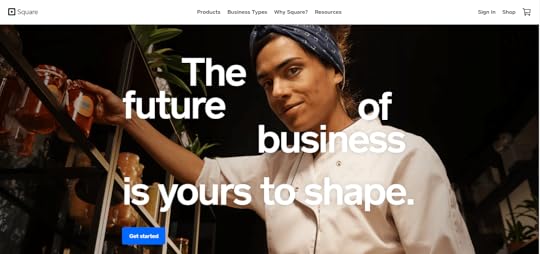 Source / SquareUp.com
Source / SquareUp.com
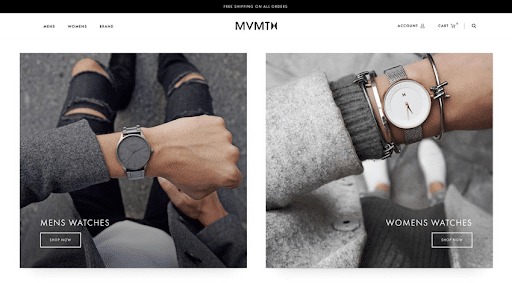
Source / Blog.Wishpond.com
Remember when we talked about the position of your marketing call to action and the importance of keeping everything above the page fold? Above are practical examples from Square and MVMT. Everything from signing in to making a purchase can be are accessible from the homepage.
Here’s another example from Netflix:

Source / Netflix.com
Notice the imperative tone: “Get started,” “Watch anywhere.”
Here’s another call to action example:

Source / Avg.com
AVG kept it simple. The company made its CTA pop out and kept everything above the page fold. Take a second look; it’s telling you that you can download the AVG antivirus software for “FREE” by just clicking on the green button, even though you’ll still need to part with some cash if you wish to secure additional protection for your PC. They kept their call-to-action focused on the free version of their software, which though is an option, lowers the risk factor that keeps most users away from considering paid subscriptions.
CTAs in GraphicsDepending on your business values or ideology, you may choose to use graphic designs with more colorful illustrations to execute your marketing call to action. Source / Blog.Wishpond.com
Source / Blog.Wishpond.com
Here’s Zendesk, a leading customer service software provider using a clean graphic design on their website’s home page.
Social Media/ Text CTAsAs a copywriter or social media manager, your marketing skills come in handy if you can mesmerize a potential customer with a killer ad copy and the best call to action words.

Source / Blog.Hubspot.com
This post advertising Nemo Hornet 2P Tent has a more subtle CTA with a sense of humor. It’s a great example of how calls to action can be used more subtly on social media, boosted by the text surrounding it.
The Best Call to Action Words and PhrasesIn the digital advertising space, a lot of time, effort, and money are spent on web and graphic designs, page layout, user interface, and more. Because of this, sometimes little attention is given to the CTA button. It’s more than a button or link; it’s an expression and reflection of what your ad copy is all about. Inject some dynamism and creativity and choose a phrase tailored to your ad campaign.
Looking for a list containing the best call-to-action words might be a long shot, but here are some call to action words and phrases that have proven effective. These could also pass for call to action button examples:
Get StartedSign Up FreeCreate AccountLearn MoreExploreDiscoverGet __% OffTry for FreeShop NowConclusionTo wrap things up, paying more attention to your call to action will do your marketing project a whole world of good. For most successful CTAs, the devil is in the detail. Speak according to your brand identity, be creative, be clear and concise, use action verbs, sprinkle a little bit of witty humor if need be, and viola! You’ll be good to go.



